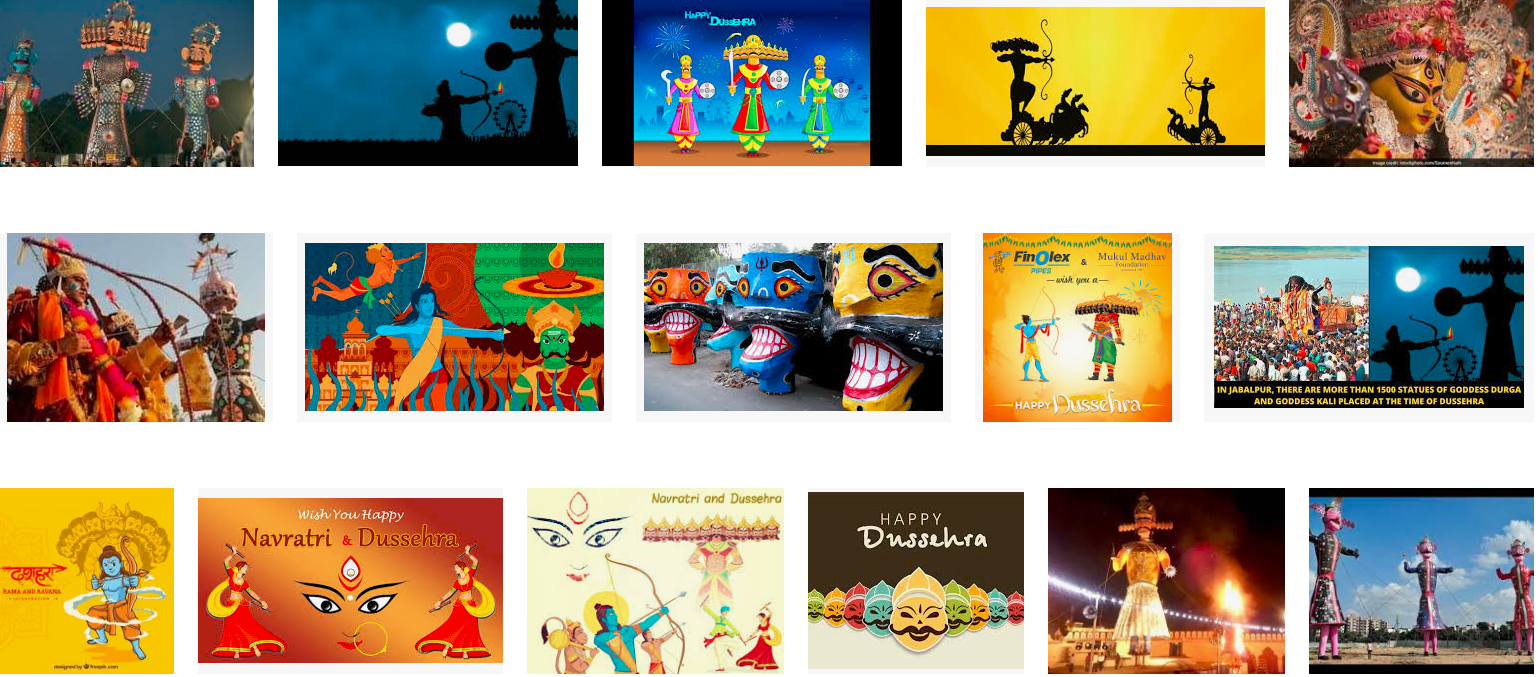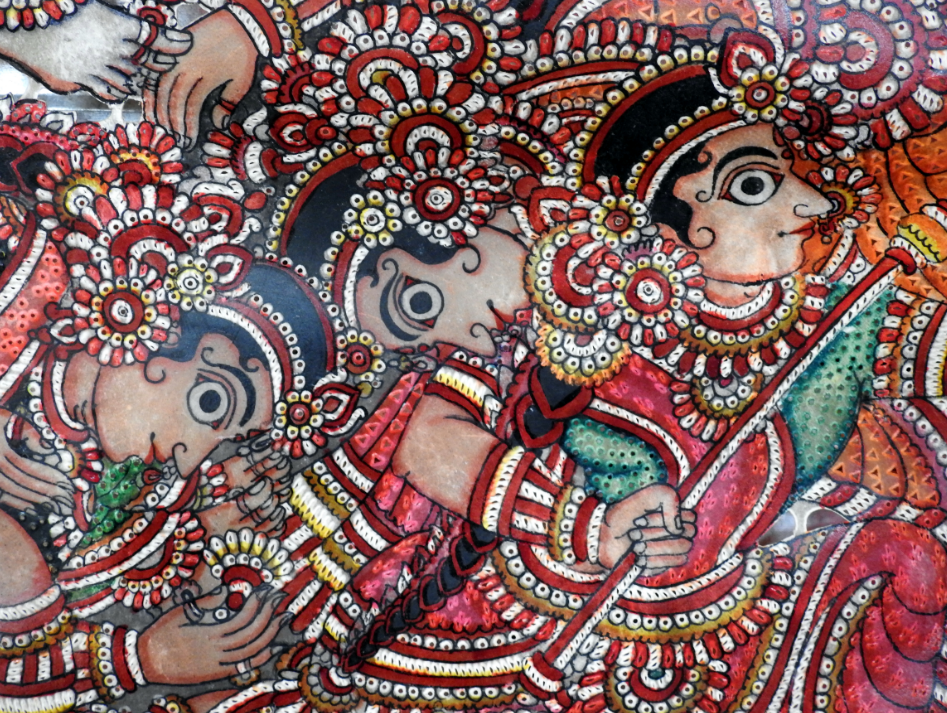Come October and India gears up for one of its longest festival Dusshera that is spread over a whopping ten days and is an ode to Goddess Durga.
It is once again that time of the year when the Navratri festivities ring in a feeling of fun and add a zing to daily life. The ten days of Dusherra are celebrated across India and its numerous manifestations make this festival as unique and as spiritual too. And this year the festivities are on between October 10th and 19th.
Festive Fervour
Celebrating Goddess Durga, the Navratri is spread over nine days and is a celebration of good over evil. Starting after Mahalaya Amavasya, the festival celebrates Goddess Parvati in her form of Shakti. The celebrations have a long history and date back to the Vijanagara empire and also the Wodeyar kingdom of Mysore. The two most important events that the festival celebrates is Ram’s victory over Ravana as well as the slaying of Mahisasura by Goddess Durga. It is said that the Goddess fought hard for nine days and nine nights with the demon before finally killing him on the tenth day – Vijaya Dashmi. Buddhists also count this as an important day as it is believed to be the day when Ashoka converted to Buddhism and took an oath of nonviolence. The word Dusherra itself comes from Dus (meaning evil) and Hara (meaning destruction) in Sanskrit. The nine day festivities are celebrated across India with different names like Navratri (Oct 10-18), Dussehra (Oct 19) and Durga Puja (Oct 15-19) but the ethos is the same everywhere. The month of Ashwin as per the Hindu calendar and that falls typically during the months of September-October and there is a special meaning for each day of Navratri. On each of the nine days, the Goddess has a new look and new colour and there is a different significance of each day. The first day is when the Goddess is worshipped as Shailputri, the daughter of the Himalayas. On the second day, Durga is worshipped as Brahmacharini one of the many forms of Parvati. On the third day, the Goddess is worshipped as Chandraghanta a symbol of beauty and bravery. On Day four, the Goddess is Kushmanda who according to legend created the entire universe. Day five is when the Goddess is worshipped in the form of Skanda Mala (Skanda’s mother who was the warrior head of the army of Gods). On the sixth day the Goddess is worshipped as Katyayani who has four hands and three eyes and sits on a lion. The seventh day sees the Goddess worshipped as Kalratri that translates to dark night when she teaches how to be courageous. The eighth day sees the Goddess worshipped as Maha Gauri when the Goddess is adorned with white jewellery. Day nine is when the Goddess assumes the form of Siddhidatri who embodies all the eight siddhis.
Ode to Durga
The Durga Pooja festivities include a puja to gadgets and vehicles as well as well worship books to honour Saraswati, the goddess of learning. Durga Puja in West Bengal is typically a five day affair. The pandals see huge idols of the Goddess which starts on the Mahashasthi. The musical welcome includes a drum called dhak and the main activity on the first day is the unveiling of the face of the idol. An ancient ritual Kalaparambho involves worshipping nine types of plants and precedes the actual start of the puja. The first day of Durga puja, Saptami is when devotees offer flowers or Pushpanjali in the pandal in the morning. On the next day which happens to be the eighth day Mahashtami Sandhi Puja is performed that is the inter-linking of the Mahashtami and Mahanavami. The Navami puja is next which also includes an offering of a variety of food (referred to as Bhog). The last day is the tenth or Dashami when married women apply sindur to the image of the Goddess dressed in white and red sarees as a sendoff. A procession with the Goddess happens in the locality where the pandal is located and the idol is finally immersed in the river.
Regional Diversity
Every state in India celebrates the festival with a unique touch and subtle nuances that add to the flavour of Dussehra. The Mysore Dasara which has now become a huge annual affair includes a grandiose procession called Jumbo Savari where elephants are paraded and the Goddess is carried in a golden hoodah on one of the oldest elephants. Mysore is home to the Chamundi Hills where Goddess Durga is supposed to have killed Mahishasura and gives the city its name. Being the principal deity of worship of the royal family, the celebrations include a special durbar at the Mysuru palace that is lit during the evenings as well as cultural events and exhibitions held across the city. In West Bengal, Durga Puja or Pujo, as it is referred to colloquially is the time when the city is swathed in colourful festivities. Hopping between pandals each of which is done up in a unique way with large idols of Goddess Durga is a favourite activity at this time. If you are here head to the old mansions like Sovabazar Raj Bari and Rani Rashmoni Bari to witness the traditional Bonedi Bari pujas too. Himachal Pradesh celebrates Kullu Dussehra that sees a congregation of 200 plus local deities from neighbouring villages to participate in Lord Raghunath’s Rath Yatra to Dhalpur Maidan. Interestingly these celebrations begin on Vijayadashami the last day when the Dussehra festivities in the rest of the country. The festival concludes with the Lankadahan ceremony when dry leaves, grass and twigs that symbolise Lanka are burnt on the banks of river Beas. In Karnataka the practice of a display of dolls in sequential form gives it the name Bombe Habba (that translates to doll festival). The dolls are usually images of Gods and Goddesses and also some contemporary ones make it to the display and is a huge draw with children and adults alike. A similar tradition happens in Tamil Nadu – Bommai Kolu and Andhra Pradesh – Bommala Koluvu. Hyderabad’s Bathukamma is a floral festival celebrated as an ode to Goddess Gauri that starts on Mahalaya Amavasya and ends on Durgashtami. Likewise, Bastar Dussehra is a unique 75-day festival celebrated in Chhattisgarh to honour the presiding deity of Bastar Devi Danteshwari. If you are in Varanasi, the Ram Lila (plays based on episodes from the Ramayana) performed beside the Ramnagar Fort is a key attraction. Delhi also has a fair share of the Ram Lila plays but do not miss the Kanjak Puja that includes puri-halwa-channa offerings and the burning of the larger than life effigies of Ravana, Ravana’s son Meghnada and Ravana’s brother Kumbhkarana on the last day. The Madikeri Dasara in Coorg includes a traditional Karaga, a ritualistic folk dance dedicated to Draupadi that is performed during the festival. The Kulasekarapattinam Dasara that happens in Tamil Nadu’s Kulasekharapattinam at the Mutharamman Temple combines colourful costumes, music, dance and drama. Kota in Rajasthan celebrates Dussehra with a 25 day fest or mela that sees cultural performances, costume plays, fireworks and delicious festive food.
Gastronomy Calling
Like with any festival there are many interesting foods associated with Dusherra. Interestingly many people also fast during Navratri which is broken after a special offering is made to the Goddess. Fasting involves a typical vegetarian diet based on fruits and milk. Special foods like sabudana vada, arbi ki kadhi, coconut laddoos, Kacche Kele ki Chaat, kele ki subzi and rajgire ki puri are usually prepared at this time as part of the special fast. The nine forms of the Goddess are offered special foods on each day. Day 1 has Pure Ghee to Maa Shailputri for health, day 2 has sugar to Goddess Brahmacharini for longevity and day 3 has milk or milk based sweets offered to Mata Chandraghanta for happiness. Day 4 sees Malpuato Mata Kushmanda to help improve intellect and decision making. Day 5 sees bananas offered to Mata Skandmata for physical health. On Day 6 honey is offered to Maa Katyayani for physical appearance and day 7 has jaggery offered to Mata Kaalratri for pain relief. Day 8 is Durga Ashtami and Mahagauri is offered coconut and day 9 sees til or sesame to Goddess Siddhidatri that helps in protection against anything untoward. Navratri delicacies do include a lot of sweets and savouries that are local to each of the areas where celebrations happen with gaiety. However the best takeaway from the ten day long festival is the key message that good always triumphs over evil – a lesson that matters so much especially in today’s times.
Fun Facts
- In many parts of North India, on the first day of Navratri there is a tradition to plant barley seeds in earthen pots.
- On the day of Dusshera sprouts are used for good luck and men place them in their caps or behind their ears.
- Dussehra is also celebrated in Bangladesh and Nepal.
- Malaysia has an official holiday to mark Dusherra.
- The festival marks the change of the agriculture crops.
- It is said that Goddess Durga visits her maternal home with her children Ganesh and Kartik on the day of Durga Puja and goes back to Kailash and Lord Shiva on Dussehra.
The Nine Forms of the Goddess
- Durga
- Bhadrakali
- Amba or Jagadamba
- Annapurna
- Sarvamangala
- Bhairavi
- Chandika or Chandi
- Lalita
- Bhavani
This story first appeared in Spicejet’s Spice Route magazine Oct 2018 here:72 Spotlight Feativals74, Spotlight Feativals,76 Spotlight Feativals, 78 Spotlight Feativals
